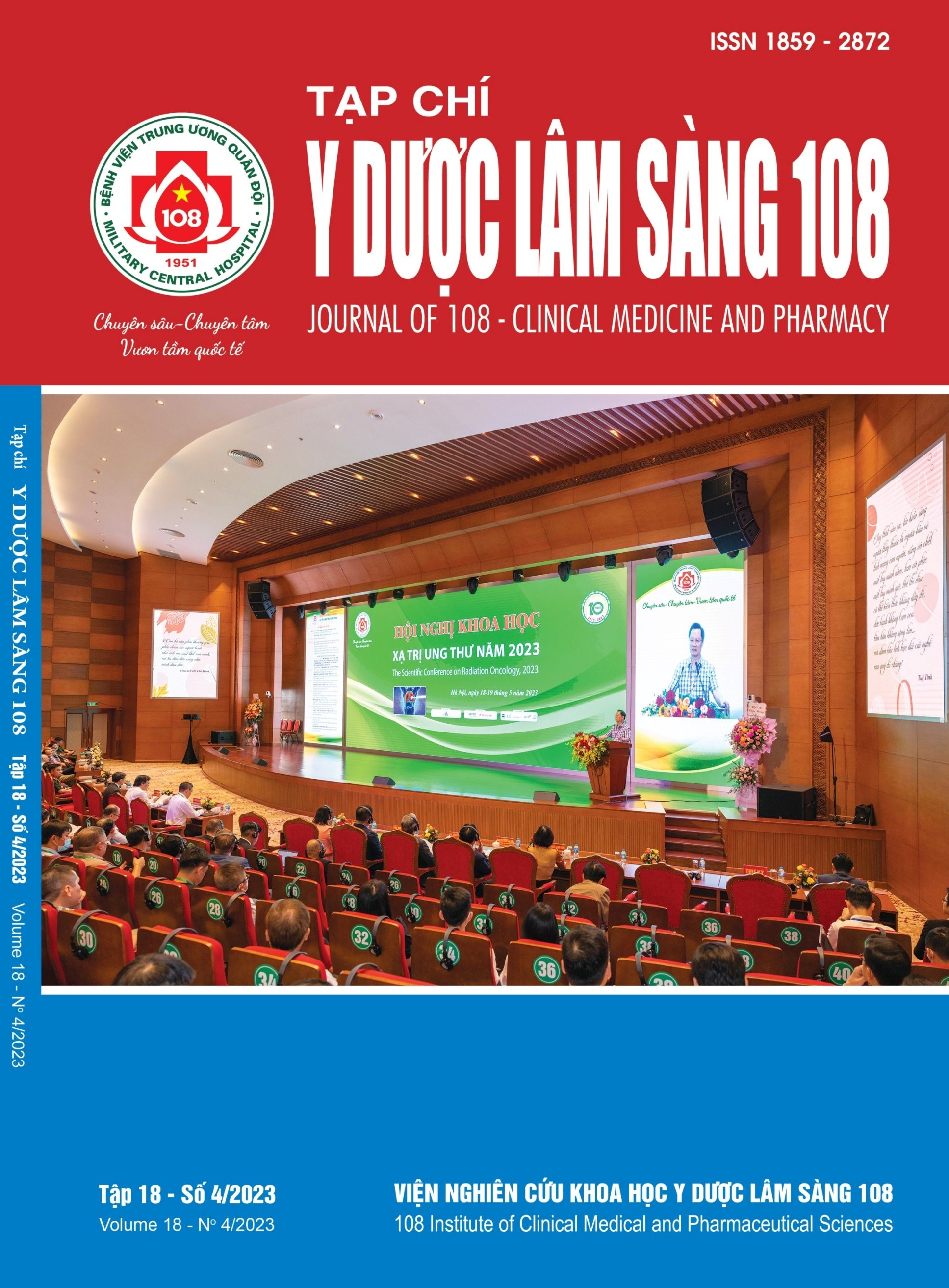Research of high risk factors of type 2 diabetes among people in Ninh Binh province
Main Article Content
Keywords
Abstract
Objective: To provide data on the prevalence, clinical, and lifestyle characteristics of individuals with high risk for type 2 diabetes, and compare the differences between two distinct areas in Ninh Binh province, for community intervention planning. Subject and method: A cross-sectional study was conducted on 6,878 high-risk individuals in Ninh Binh and Tam Diep cities, using screening methods and descriptive analysis to compare the epidemiological and lifestyle characteristics between the two locations. Result: The mean age of high-risk individuals was 53.74 ± 9.29 years, with a female to male ratio of 1.8:1. The average BMI, systolic blood pressure, diastolic blood pressure, fasting blood glucose levels, and 2-hour plasma glucose levels were significantly higher in Ninh Binh compared to Tam Diep (p<0.05). The prevalence of overweight/obesity, increased waist circumference, and waist-to-hip ratio were also significantly higher in Ninh Binh compared to Tam Diep (p<0.05). The prevalence of risk factors such as family history of T2D, high-fat diet, smoking, alcohol consumption, and low physical activity were also significantly higher in Ninh Binh compared to Tam Diep (p<0.05). Conclusion: There are significant differences in BMI, systolic blood pressure, diastolic blood pressure, fasting blood glucose levels, 2-hour plasma glucose levels, prevalence of overweight/obesity, waist circumference, waist-to-hip ratio, family history, and lifestyle behaviors of high-risk individuals living in different geographical and economic regions.
Article Details
References
2. World Health Organization (2010) Use of glycated Haemoglobin (HbA1c) in the diagnosis of diabetes mellitus - abbreviated report of a WHO consultation.
3. World Health Organization (2016) Global report on diabetes. ISBN: 9789241565257.
4. Tabák AG, Herder C, Rathmann W, Brunner EJ, Kivimäki M (2012) Prediabetes: A high-risk state for developing diabetes. Lancet 379(9833):2279-90. doi: 10.1016/S0140-6736(12)60283-9.379(9833): 2279.
5. Trần Hữu Dàng (2011) Đái tháo đường. Bệnh nội tiết chuyển hóa, Nhà xuất bản Giáo dục Việt Nam, tr. 268, 272.
6. Lê Anh Tuấn, Nguyễn Hải Thủy, Võ Văn Thăng (2010) Tình hình tiền đái tháo đường týp 2 ở đối tượng trên trên 45 tuổi tại Bệnh viện Quận Hải Châu - Đà Nẵng. Tạp chí Nội Khoa, 4, tr. 491-499.
7. Lê Anh Tuấn, Nguyễn Hải Thủy, Võ Văn Thăng (2010) Yếu tố nguy cơ ở đối tượng tiền đái tháo đường mới phát hiện tại Bệnh viện Quận Hải Châu - Đà Nẵng.
8. Blair M (2016) Diabetes mellitus review. Urol Nurs 36(1): 27-36. PMID: 27093761.
9. American Diabetes Association (2020) Classification and diagnosis of diabetes: Standards of medical care in diabetes 2020. Diabetes Care 43(Suppl 1): S14-S31. doi: 10.2337/dc20-S002. PMID: 31862745.
 ISSN: 1859 - 2872
ISSN: 1859 - 2872
